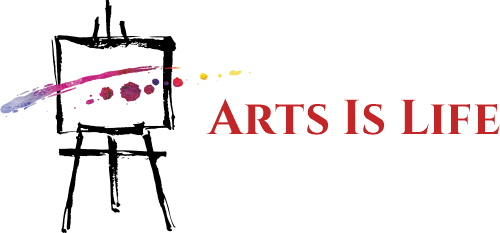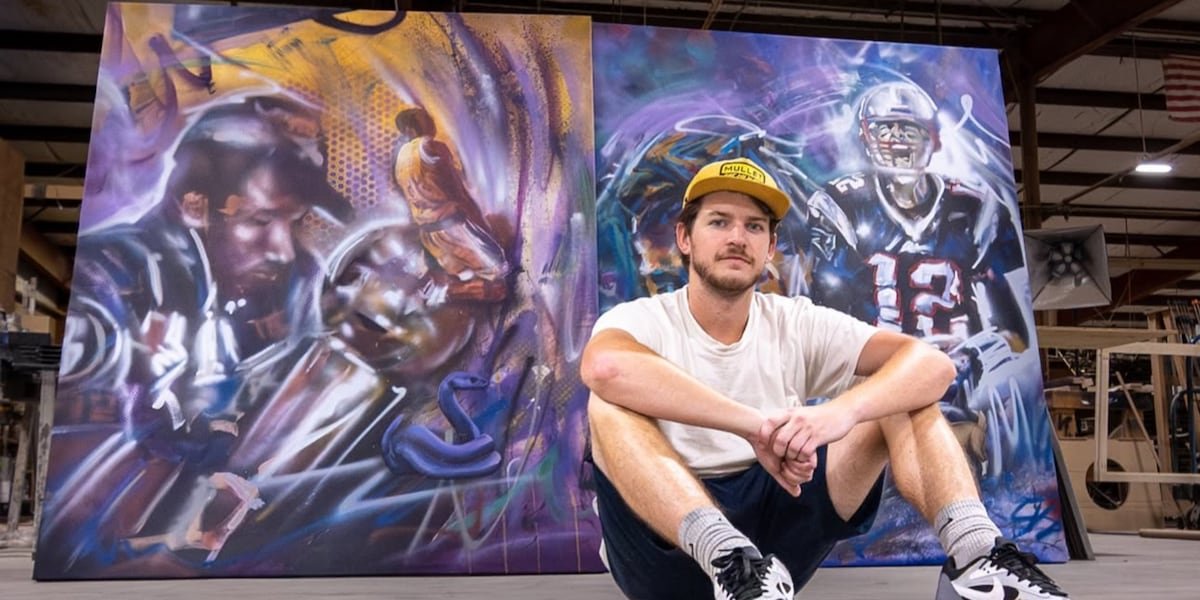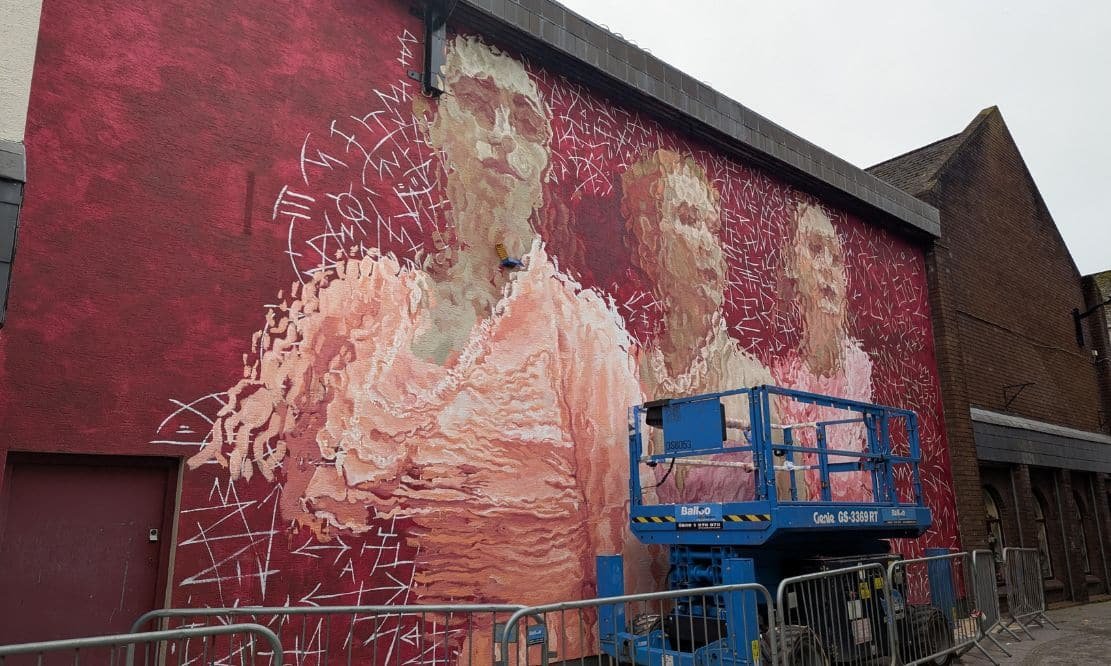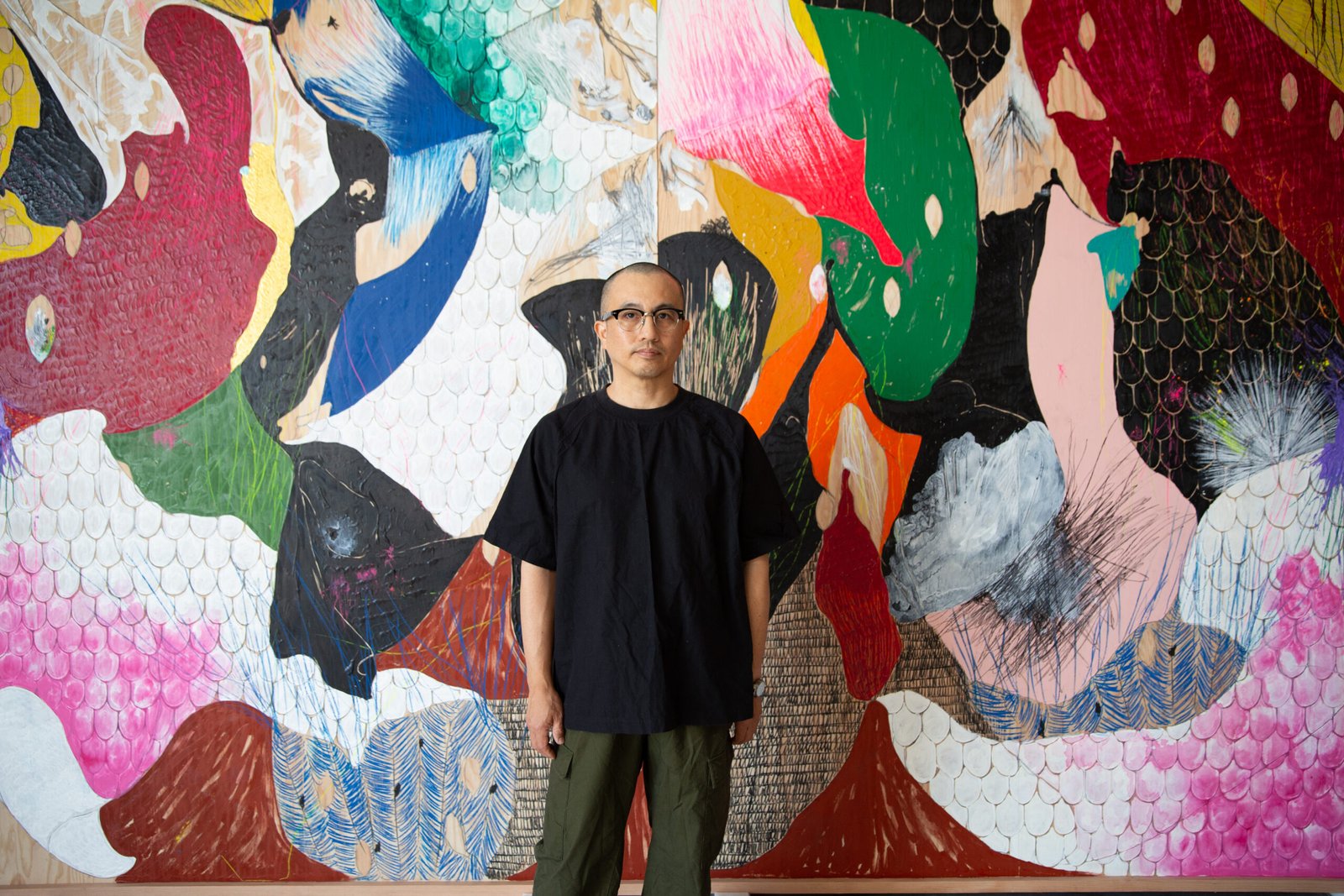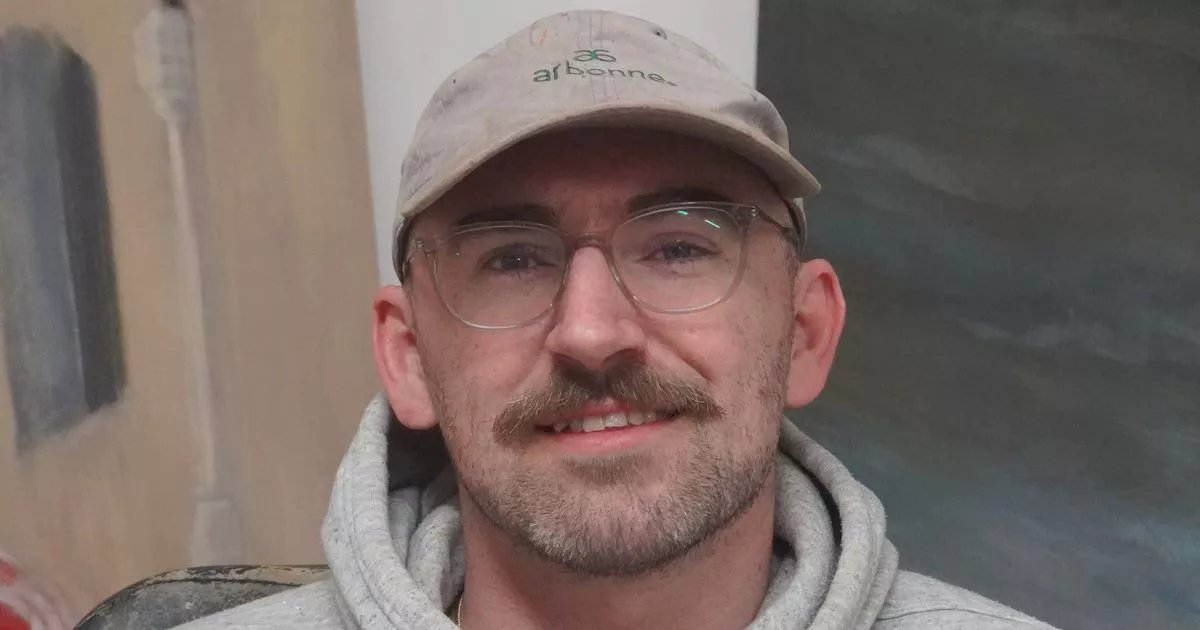One of Taoism’s core beliefs is that there are opposing but complementary forces at play everywhere – yin and yang, an idea we are familiar enough with in the West. The less familiar concept of wu wei, meanwhile, stresses the importance of spontaneity.
“The idea is that you’re painting with less effort and you’re not complicating things by overthinking,” he says. “You can only do that through a lot of experience. I’ve painted over 1000 landscapes in Scotland over the years and once you have that visual vocabulary, you’re just drawing on what’s within you. So I guess it’s just a vehicle for me being able to tune into more of me and less of the literal landscape. It’s a mindset.”
Read more:
Proof of the efficacy of that mindset can be seen from this weekend at The Lemond Gallery in Glasgow. Naismith presents 35 landscapes in a show he has given a simple name: Paint. It features works with titles such as Materialised, Taoist Flow and Blue Harmony, though there other works are tied more to the material world. Among these are spectacular studies of Glasgow viewed from on high, such as The Clyde Arc Bridge (Naismith was a pioneer in the use of drones to capture aerial images), and works such as Rhum From Eigg, which does pretty much what it says on the tin. That one, he adds, is “the most literal landscape” in the show.

The images captured using drones, meanwhile, allow Naismith to disrupt the natural perspective. He calls the technique “ambiguous altitude” and the resulting paintings “atmospheric abstractions.” The architecture-based cityscapes he refers to as representing “the human element” in his work. The three Glasgow studies are a nod to three paintings he made to mark the 2014 Commonwealth Games, as well as to the fact that the games return to the city next July.
Naismith has been using drones in his work since 2013, but he was an even earlier adopter of another form of technology – YouTube. It was 2009 when he began making video content for the platform. “I just started using it as a tool, mostly to record my own process from start to finish to look back on,” he says. “Just a personal thing.”
The first video was simply footage of him painting. It racked up 1000 views. Not bad. “But putting it on YouTube brought eyes that wouldn’t normally go into a gallery, and what I expected to be a learning experience turned into a teaching experience. In 2012 I did a series of colour theory videos and they’ve had more than a million views.”
A graduate of Duncan of Jordanstone College of Art and Design, where he studied printing and illustration, Naismith’s own artistic ‘teachers’ include JMW Turner and 20th century abstract painters Willem de Kooning, Franz Kline and Nicolas de Staël. His own style he refers to as semi-abstract, however.
“The semi-abstract ties in with the order and chaos idea,” he says. “Any semi abstract artist has this issue of how much to refine and how much to leave chaotic … You have to have enough energy and abstraction so as not to be too stilted or rigid, and enough abstraction to be challenging. That’s just a balance of the duality of representation versus the spiritual, the spiritual being anything which isn’t material. So semi-abstraction is the meeting of the material and the spiritual.”

As for the simple title of the Lemond Gallery show, it’s Naismith’s way of acknowledging what he describes as “the parallel between the process itself and the concept. When I talk about creating order from chaos, the paintings literally begin in chaos … It’s like when you produce a jigsaw – the first thing you do is empty all the pieces out, the second thing is turn them all the right way around.”
That technique often means starting a work with the canvas laid flat on the ground before lifting it onto an easel for completion. In the horizontal, Naismith applies lashings of thick paint with fat brushes and palette knives. Sometimes he uses cans of spray-paint. In the vertical, thinner paint is applied. And so on and so on, until the work is complete.
“I always know when a painting is finished when order balances chaos,” he says finally. “So there’s enough energy in the painting and, conversely, enough refinement of that energy.”
Once again, it’s all about balance – between order and chaos, between the conscious and the subconscious, between the artist and the medium.
Scott Naismith: Paint is at The Lemond Gallery, Glasgow, from October 4 (until October 12)
